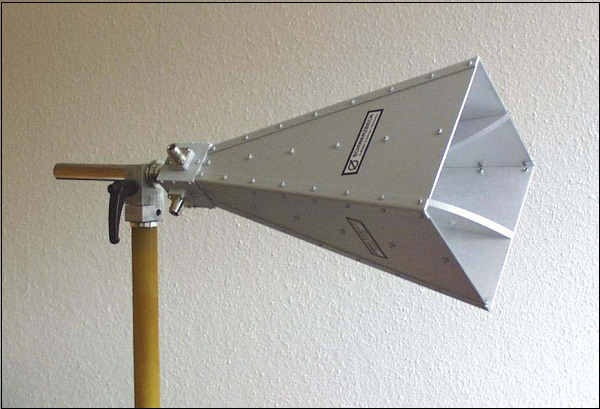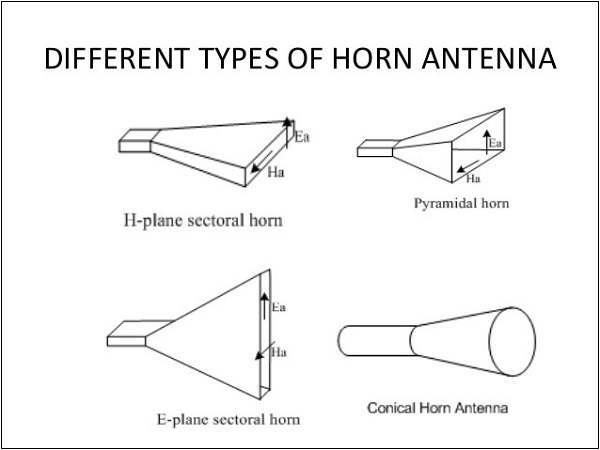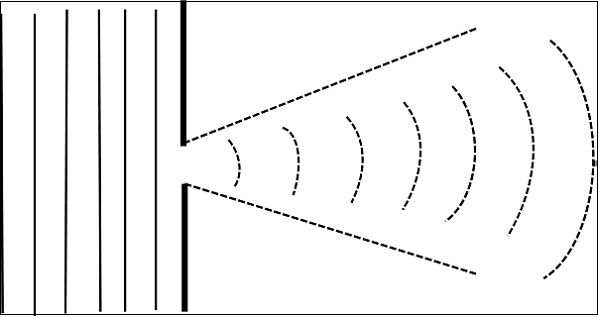
- Antenna Theory - Fundamentals
- Antenna Theory - Basic Parameters
- Antenna Theory - Parameters
- Antenna Theory - Near & Far Fields
- Antenna Theory - Radiation Pattern
- Isotropic Radiation
- Antenna - Beam & Polarization
- Antenna Theory - Beam Width
- Antenna Theory - Reciprocity
- Antenna Theory - Poynting Vector
- Types of Antennas
- Antenna Theory - Types of Antennas
- Antenna Theory - Wire
- Antenna - Half-Wave Dipole
- Antenna - Half-Wave Folded Dipole
- Antenna - Full-Wave Dipole
- Antenna Theory - Short Dipole
- Antenna Theory - Long Wire
- Antenna Theory - V-Antennas
- Inverted V-Antenna
- Antenna Theory - Rhombic
- Antenna Theory - Loop
- Antenna Theory - Helical
- Antenna Theory - Aperture
- Antenna Theory - Horn
- Antenna Theory - Slot
- Antenna Theory - Micro Strip
- Antenna Theory - Lens
- Parabolic Reflector
- Antenna Arrays
- Antenna Theory - Antenna Arrays
- Antenna Theory - Collinear Array
- Antenna Theory - Broad-side Array
- Antenna Theory - End-fire Array
- Antenna Theory - Parasitic Array
- Yagi-Uda Antenna Theory
- Log-periodic Antenna Theory
- Turnstile Antenna Theory
- Wave Propagation
- Antenna - Spectrum & Transmission
- Antenna - Types of Propagation
- Antenna - Lonosphere & its Layers
- Terms in Wave Propagation
- Antenna Theory Useful Resources
- Antenna Theory - Quick Guide
- Antenna Theory - Useful Resources
- Antenna Theory - Discussion
Antenna Theory - Horn
To improve the radiation efficiency and directivity of the beam, the wave guide should be provided with an extended aperture to make the abrupt discontinuity of the wave into a gradual transformation. So that all the energy in the forward direction gets radiated. This can be termed as Flaring. Now, this can be done using a horn antenna.
Frequency Range
The operational frequency range of a horn antenna is around 300MHz to 30GHz. This antenna works in UHF and SHF frequency ranges.
Construction & Working of Horn Antenna
The energy of the beam when slowly transform into radiation, the losses are reduced and the focussing of the beam improves. A Horn antenna may be considered as a flared out wave guide, by which the directivity is improved and the diffraction is reduced.

The above image shows the model of a horn antenna. The flaring of the horn is clearly shown. There are several horn configurations out of which, three configurations are most commonly used.
Sectoral horn
This type of horn antenna, flares out in only one direction. Flaring in the direction of Electric vector produces the sectorial E-plane horn. Similarly, flaring in the direction of Magnetic vector, produces the sectorial H-plane horn.
Pyramidal horn
This type of horn antenna has flaring on both sides. If flaring is done on both the E & H walls of a rectangular waveguide, then pyramidal horn antenna is produced. This antenna has the shape of a truncated pyramid.
Conical horn
When the walls of a circular wave guide are flared, it is known as a conical horn. This is a logical termination of a circular wave guide.

The above figures show the types of horn configurations, which were discussed earlier.
Flaring helps to match the antenna impedance with the free space impedance for better radiation. It avoids standing wave ratio and provides greater directivity and narrower beam width. The flared wave guide can be technically termed as Electromagnetic Horn Radiator.
Flare angle, of the horn antenna is an important factor to be considered. If this is too small, then the resulting wave will be spherical instead of plane and the radiated beam will not be directive. Hence, the flare angle should have an optimum value and is closely related to its length.
Combinations
Horn antennas, may also be combined with parabolic reflector antennas to form special type of horn antennas. These are −
Cass-horn antenna
Hog-horn or triply folded horn reflector
In Cass-horn antenna, radio waves are collected by the large bottom surface, which is parabolically curved and reflected upward at 45 angle. After hitting top surface, they are reflected to the focal point. The gain and beam width of these are just like parabolic reflectors.
In hog-horn antenna, a parabolic cylinder is joined to pyramidal horn, where the beam reaches apex of the horn. It forms a low-noise microwave antenna. The main advantage of hog-horn antenna is that its receiving point does not move, though the antenna is rotated about its axis.
Radiation Pattern
The radiation pattern of a horn antenna is a Spherical Wave front. The following figure shows the radiation pattern of horn antenna. The wave radiates from the aperture, minimizing the diffraction of waves. The flaring keeps the beam focussed. The radiated beam has high directivity.

Advantages
The following are the advantages of Horn antenna −
- Small minor lobes are formed
- Impedance matching is good
- Greater directivity
- Narrower beam width
- Standing waves are avoided
Disadvantages
The following are the disadvantages of Horn antenna −
- Designing of flare angle, decides the directivity
- Flare angle and length of the flare should not be very small
Applications
The following are the applications of Horn antenna −
- Used for astronomical studies
- Used in microwave applications